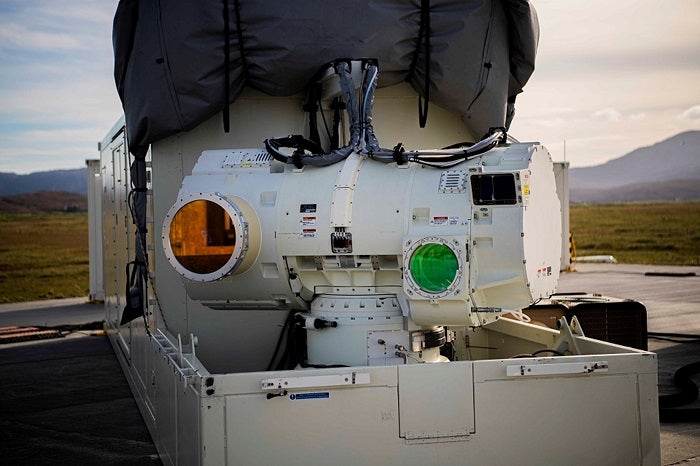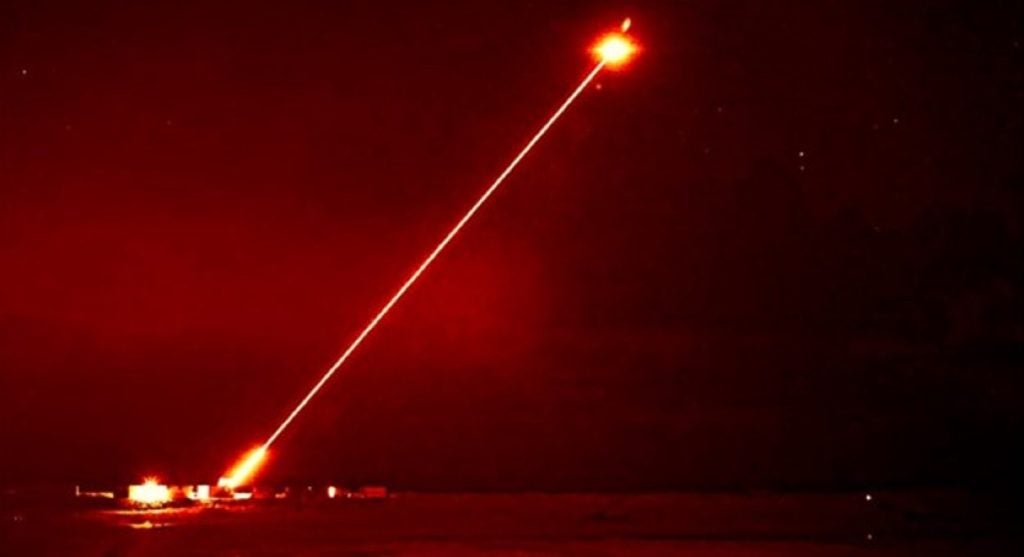The UK has performed a successful demonstration of a high-powered, directed-energy laser weapon system (LWS) at the Ministry of Defence’s (MoD) Hebrides Range, just off the northwest coast of Scotland.
This particular demonstration saw ‘DragonFire’ – a LWS jointly developed by the MoD agency – Defence Science and Technology Laboratory (Dstl) – alongside three industry partners: Leonardo, MBDA, and Qinetiq.
This milestone demonstrated the ability to engage aerial targets at long ranges.
The precision of the beam is equivalent to hitting a £1 coin from a kilometre away, according to a statement from the MoD.
Two birds, one stone solution
Having destroyed aerial targets, DragonFire presents a valuable asset as a counter-uncrewed aerial systems (C-UAS) solution to overcome the proliferated use of low-cost armed small-uncrewed aerial systems (sUAS) and drone-swarming tactics.
Moreover, as the Ukrainian Armed Forces can attest, the cost of ammunition and the rate of consumption are exceedingly high. Whereas, operating DragonFire for ten seconds is the cost equivalent of using a regular heater for just an hour.
Therefore, DragonFire has the potential to be a long-term low-cost alternative to certain tasks missiles currently carry out. The cost of operating the laser is typically less than £10 per shot.
Both the British Army and the Royal Navy are considering using this technology as part of their future air defence capabilities.
Globally, in terms of comparative total expenditure, GlobalData indicates that the US accounts for the largest high energy laser market share of 41.6% ($1.5bn), followed by China and France with a share of 14.8% ($534m) and 13.9% ($501m), respectively.
The dawn of lasers
Directed-energy weapons (DEW) can engage targets at the speed of light, and use an intense beam of light to cut through the target, leading to structural failure or more impactful results if the warhead is targeted.
The DragonFire weapon system is the result of a £100m ($126.7m) joint investment by the MoD and industry that stretches back to 2017, when the MoD’s Chief Scientific Advisor’s Research Programme awarded a £30m contract to the DragonFire consortium to demonstrate the potential of LWSs.

Indeed, though the potential benefits of DEWs in terms of cost-saving, logistics, and accuracy have long been extolled by technical specialists around the globe, it is only in recent years that militaries such as China, Israel, Russia, the UK, and the US have finally been capable of fielding those technologies through integration with existing platforms or capabilities.
In September last year, the German Navy concluded its laser weapon demonstrator trials. The LWS was integrated onto FGS Sachsen since June 2022, and achieved the first successful test firing in the Baltic four months later, the LWS has been fired more than 100 times.
Now the German Government is looking to build on those efforts to deploy a more compact and readily deployable version of the system.









